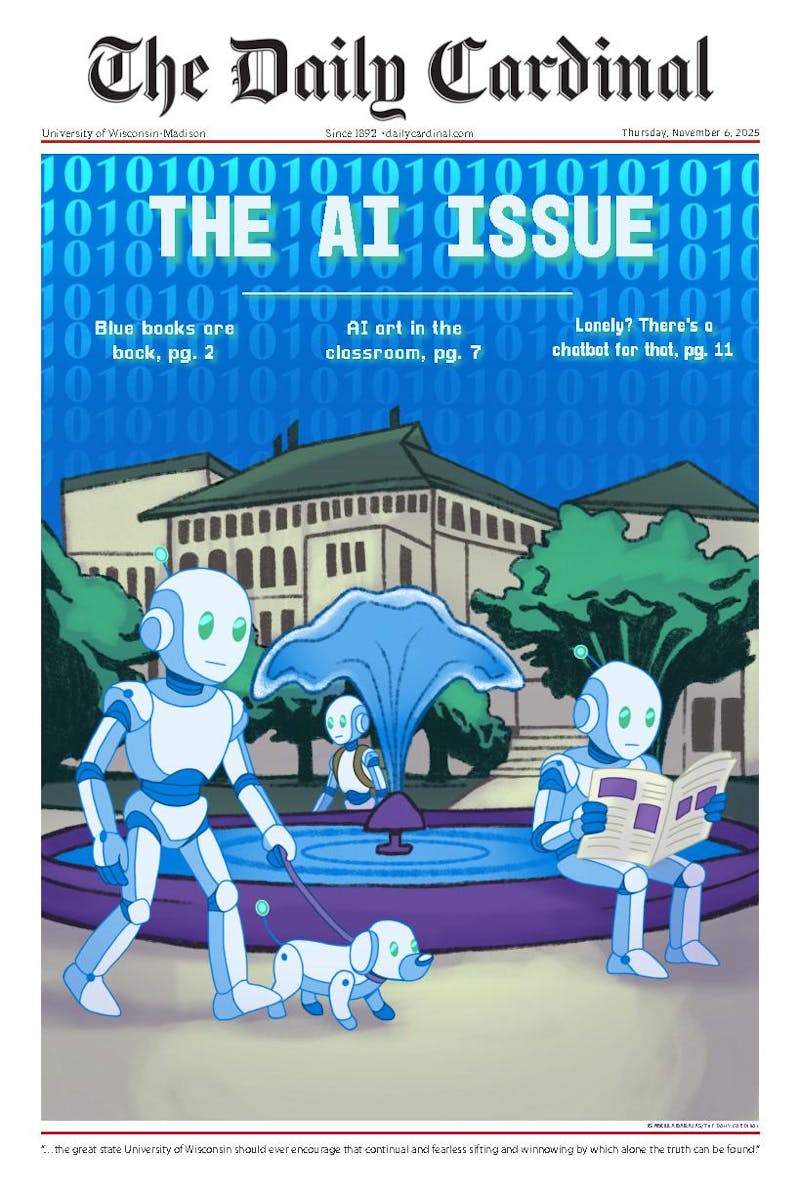This past January, a group of UW-Madison students traveled to Haiti to investigate the possibility of bringing electricity to the community of Bayonnais.
Engineers Without Borders, a student organization on campus which has in the past received a large part of its funding from segregated fees, financed the trip.
The main student government committee that finances groups on campus has since cut funding to EWB, however, and if the student group elects to send other students abroad in the future, it will have to be financed solely through fundraising.
Fortunately, EWB is accustomed to raising money to send members abroad. According to treasurer Eyleen Chou, the organization started receiving funding from segregated fees two years ago.
""Before then, we operated without segregated fee funding,"" Chou said. ""So there were far less opportunities for students to travel.""
Other organizations on campus are running into the same financial situation.
During the 2008-'09 academic year, the student government denied the funding requests of several other student groups that had previously relied on the university for financial support.
The Student Services Finance Committee, which is responsible for determining the distribution of funding, turned down Vets for Vets, the College of Agricultural and Life Sciences Student Council and Collegians for a Constructive Tomorrow in addition to EWB.
According to former SSFC member Megan Schmitz, the SSFC denied funding to these student organizations because they no longer meet established requirements as a group eligible for funding.
""A lot of them just don't meet the new criteria,"" Schmitz said. ""And a lot of them just don't meet them as a direct service.""
Schmitz is referring to the SSFC's requirement that a student group must be ""accessible and tailorable"" to all students on campus to be considered for funding through the General Student Services Fund, along with other requirements mandated by ASM bylaws.
The SSFC accepts budget proposals from organizations on campus and decides whether or not they are eligible for financial support from the GSSF. Currently, 14 student groups receive funding by way of the GSSF, including the Multicultural Student Coalition, WSUM and Badger Catholic. The GSSF gets its funds from the allocable portion of segregated fees paid by students each year.
Segregated fees are part of students' tuition that the university distributes to extra-curricular institutions, and which are broken down into allocable and non-allocable funds. Along with the GSSF, allocable fees fund the student government on campus and the bus pass program.
The other portion of segregated fees goes into a non-allocable fund, which the university then distributes to various services on campus. Money from this fund goes to University Health Services, union fees, the Child Care Assistance Tuition Program, the Student Activity Center and UHS building fee and intramural sports.
Source of segregated fees
The steepest increase in segregated fees during recent years comes from construction taking place on campus. Since the 2005-'06 academic year, the university has increased the amount going to the Student Activity Center and the Union from $182.96 to $340. The GSSF, on the other hand, now receives $41 a year, which is down from the $67.48 amount during the 2005-06 school year.
According to Assistant Vice Chancellor William Richner, students are concerned about the increase in fees going toward the construction of facilities on campus.
""I think students are making their voices known and I think students are going to be more reluctant to approve the increases in segregated fees for new facilities,"" Richner said.
This past year, students contributed over $33 million in segregated fees. Whereas university officials have the final jurisdiction in non-allocable fees, students have a say in how the SSFC spends allocable funds on campus. However, some students are unaware they pay the segregated fees, or that they even exist.
Narith Ol, a graduate student at UW-Madison, did not know what segregated fees were, only that she pays them.
""The first [time] I noticed it was when I checked my tuition bill,"" Ol said. ""I never really understood what it was.""
Likewise, UW-Madison senior Miles Johnson did not know what segregated fees were.
""Maybe it should be more clear what segregated fees are so that people like me who are almost done with school and don't even know can know what we're paying for,"" Johnson said.
Whereas Johnson agrees with the allocation of segregated fees, Ol has more reservations about the entire process.
""I wouldn't want my money going to some other special interest group that I don't care for,"" Ol said. ""And even with the activities fees. I don't really make use of the gym. Last year I didn't know that the SERF was for students and so I never went there.""
Student review of budgets
According to Richner, when the university took a closer look at the segregated fee process at UW-Madison during the 1996-'97 school year, they found that it allowed for student participation and was favorable when compared with other campuses across the state.
""They wanted to look at whether the budgets were getting student review,"" Richner said. ""And essentially they looked at every campus and said ‘you ought to do what Madison is doing. They review all of the non-allocable budgets and the students participate.'""
Although students are able to voice their opinions about the system, it can be difficult to see desired changes take effect, according to Schmitz.
""I'm starting to learn more and more ... that it's really hard to change the way things are,"" Schmitz said.
However, despite some challenges involved in the process, Schmitz said the university takes students' opinions strongly.
""We have the students at heart, Schmitz said. ""We're not doing this for ourselves. It's something bigger.""






